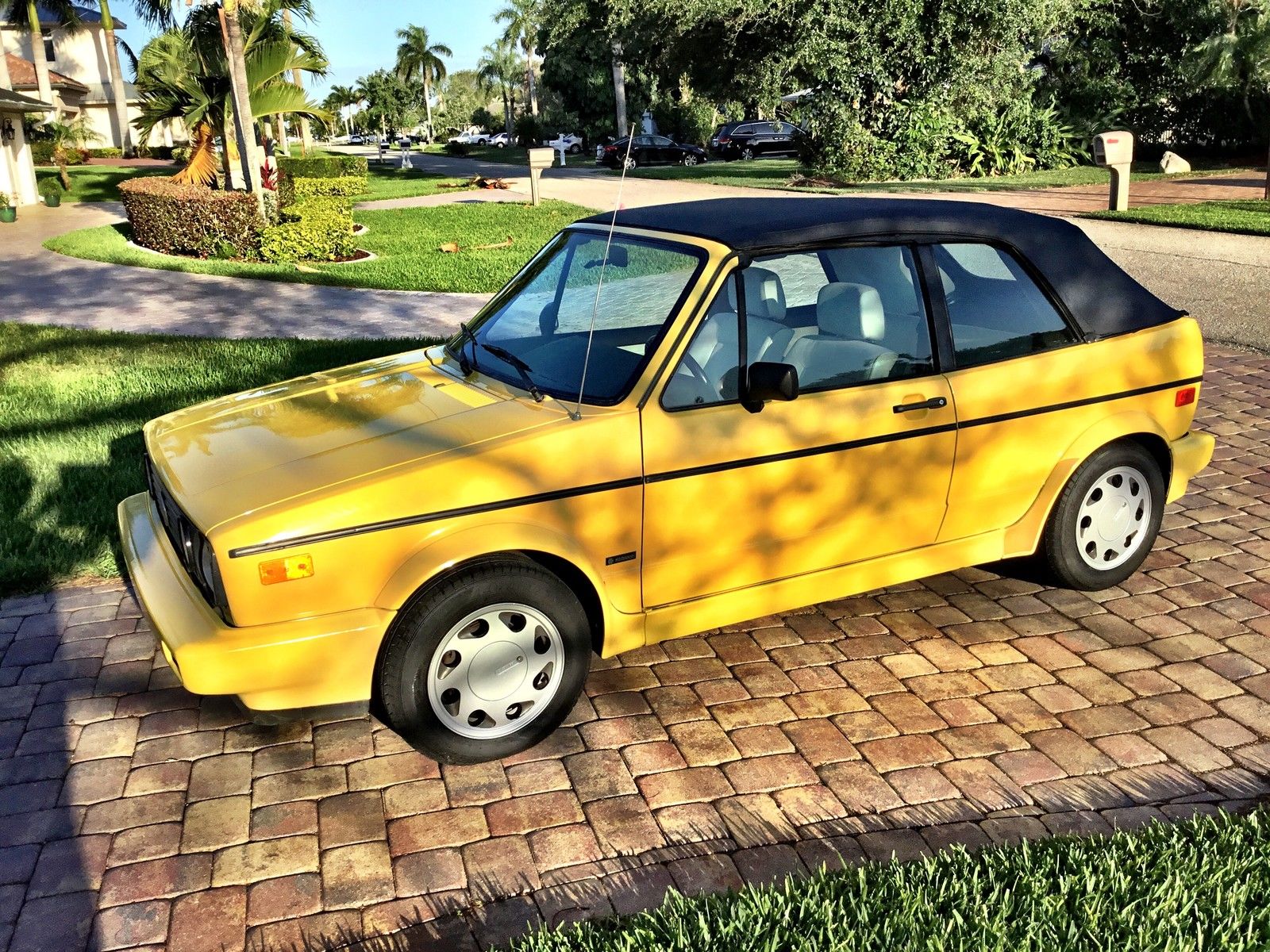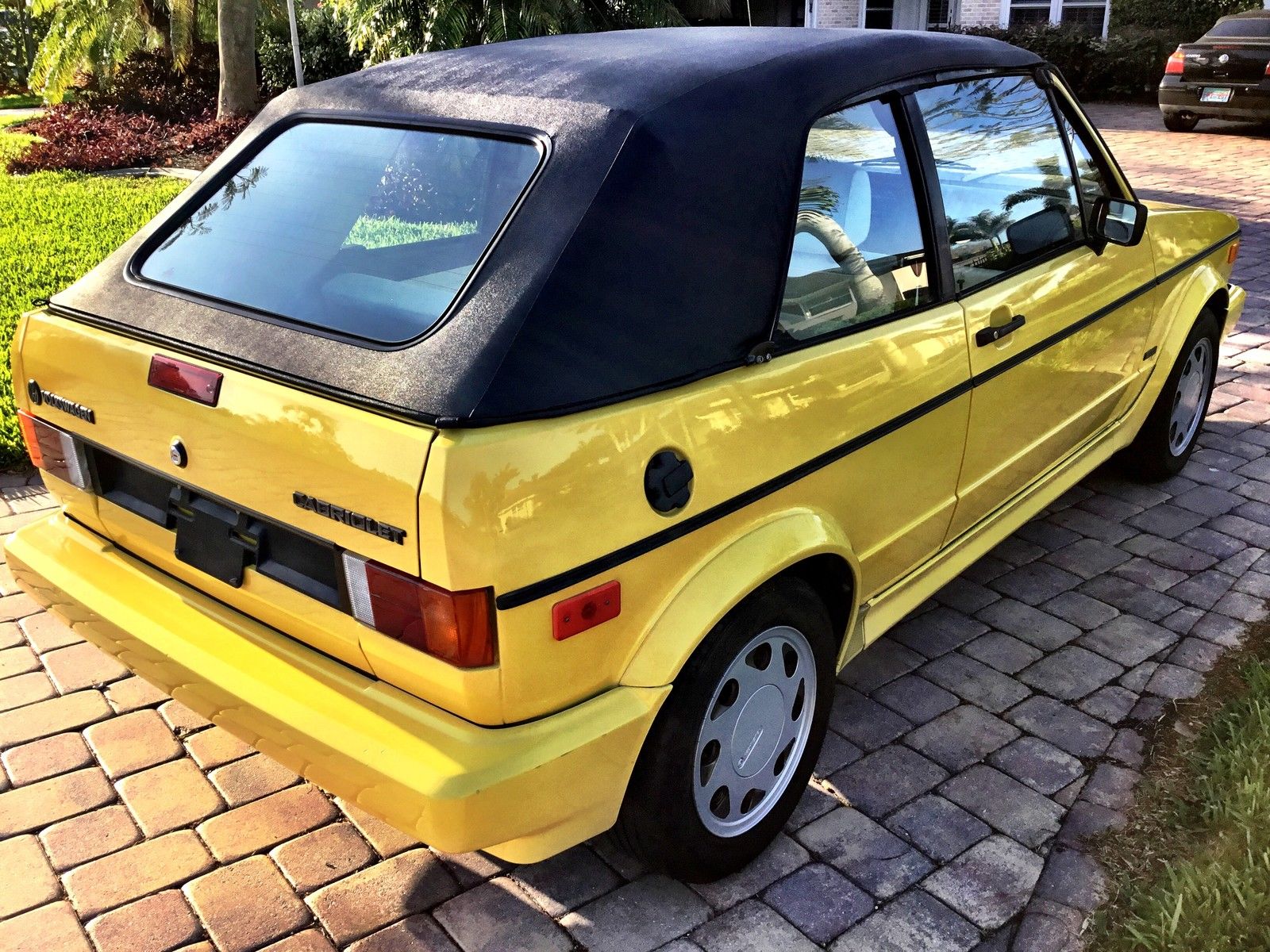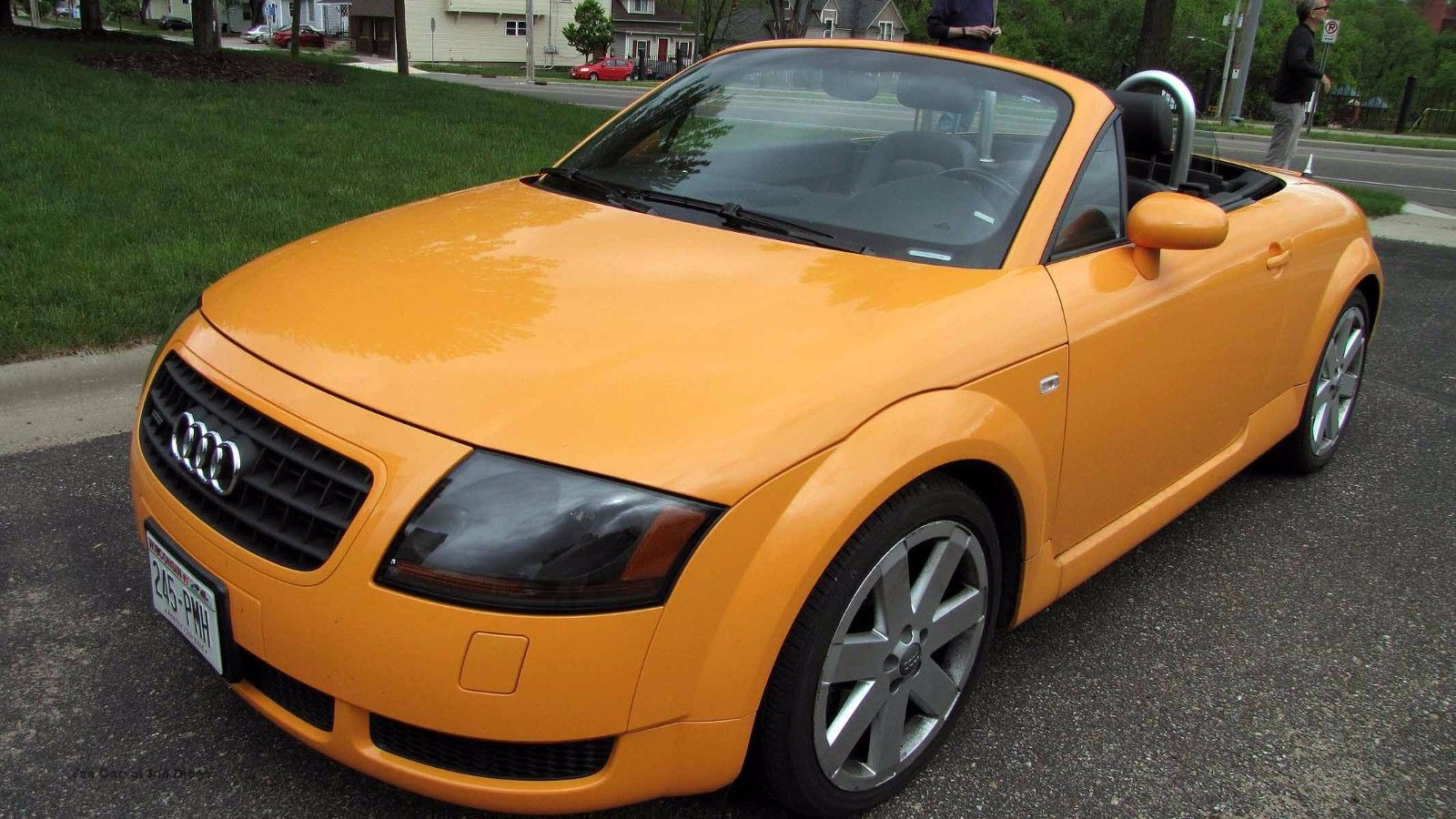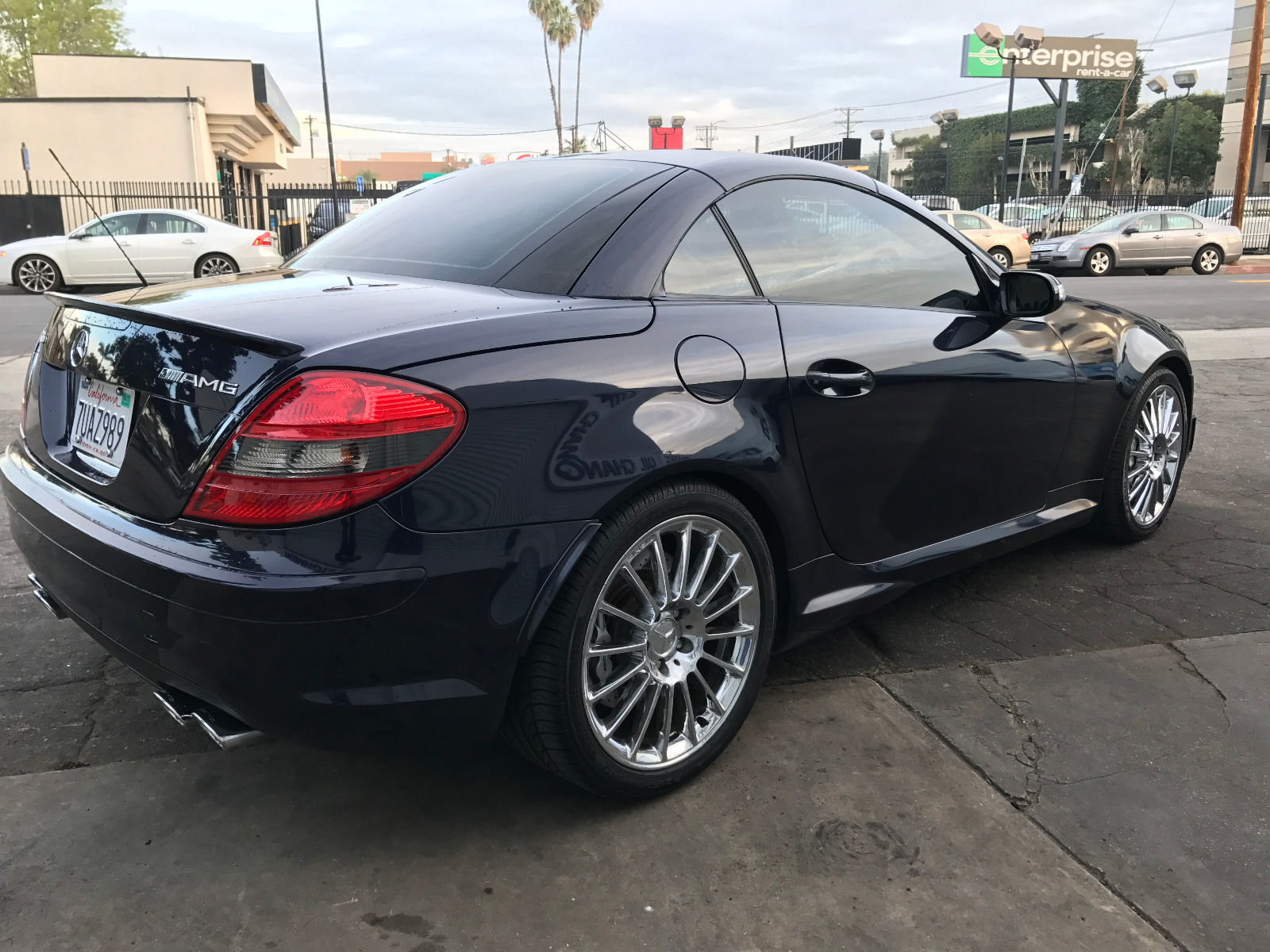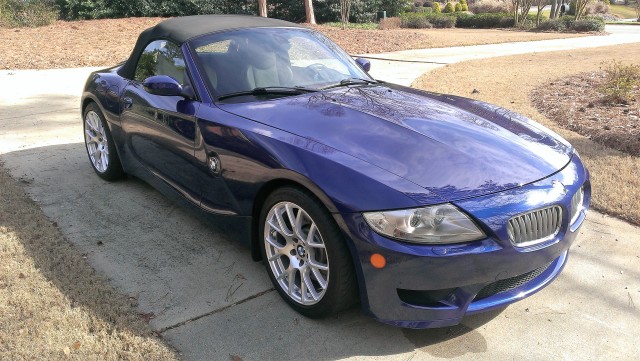The first water-cooled entrant into the Volkswagen world had remarkable staying power, just like its air-cooled brethren had before it. Construction of the first models began back in 1974, and though the convertible version didn’t begin production until five years later, the renamed (but largely unchanged) Cabriolet wouldn’t wrap up production until an amazing 1993. Granted, by that point the Cabriolet was more niche model and nostalgic throwback than practical transportation, but nonetheless it was an impressive return on investment in the chassis design that 19 years later it was still being produced. And, if you want to count the reworked South African version, technically the Mk.1 was still available for sale until 2009!
What we have here is one of the later U.S. specification Cabriolets. In 1988, Volkswagen updated the look of the aging model (which, incidentally, had just been lightly refreshed in 1985 and renamed Cabriolet from Rabbit Convertible) to the “Clipper” models. Signature would become the four-headlight grill, deeper and smoother front fascia, wider fender flares and side skirts. The Cabriolet became the first Volkswagen model to sport an airbag as standard in 1990, too, as well as a new knee protection bar to the lower portion of the dashboard. 1990 also marked the change from the ex-GTI CIS motor to the Digifant electronic fuel injection. The more upscale models, like this “Best Seller”, also received the 16V model “Teardrop” alloys making for a slick looking package:
